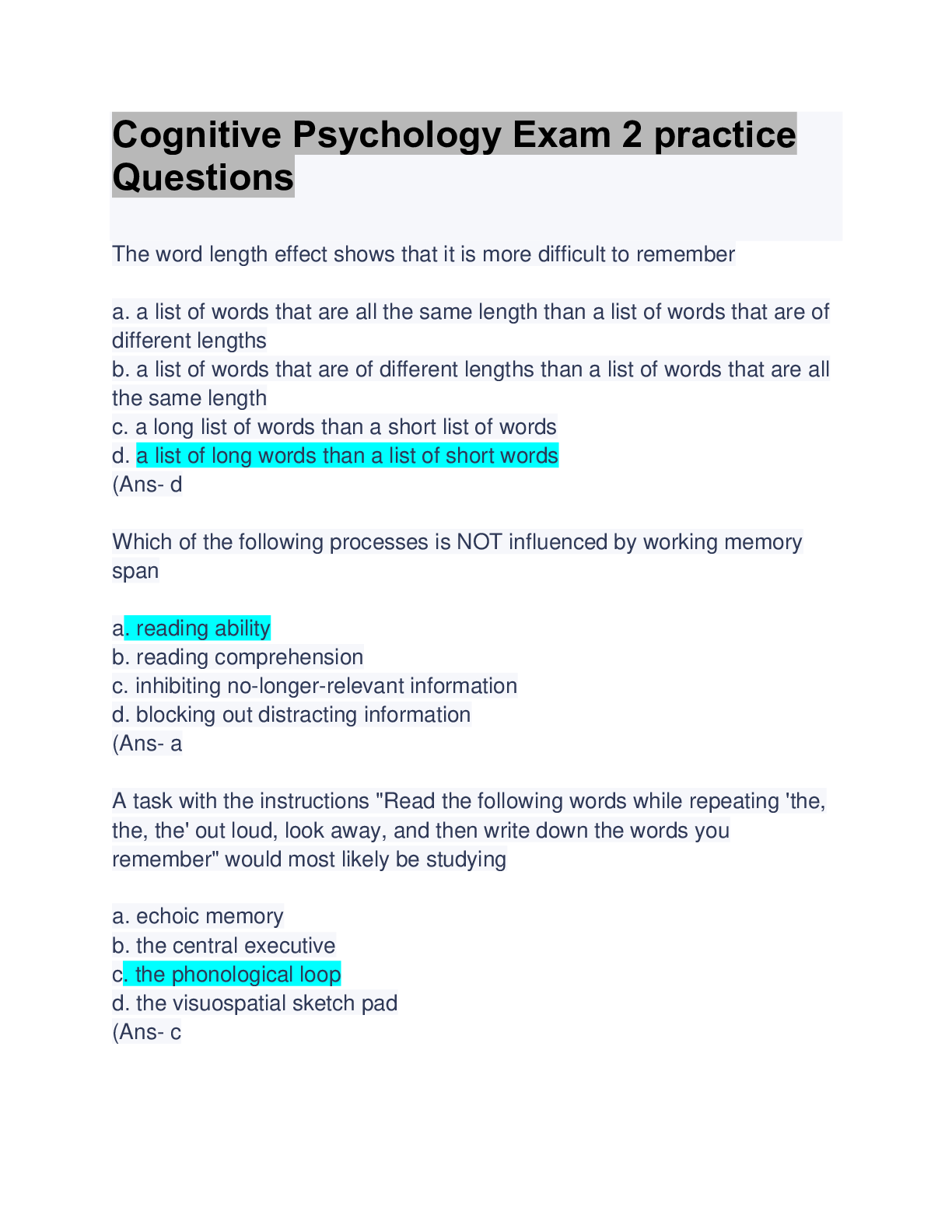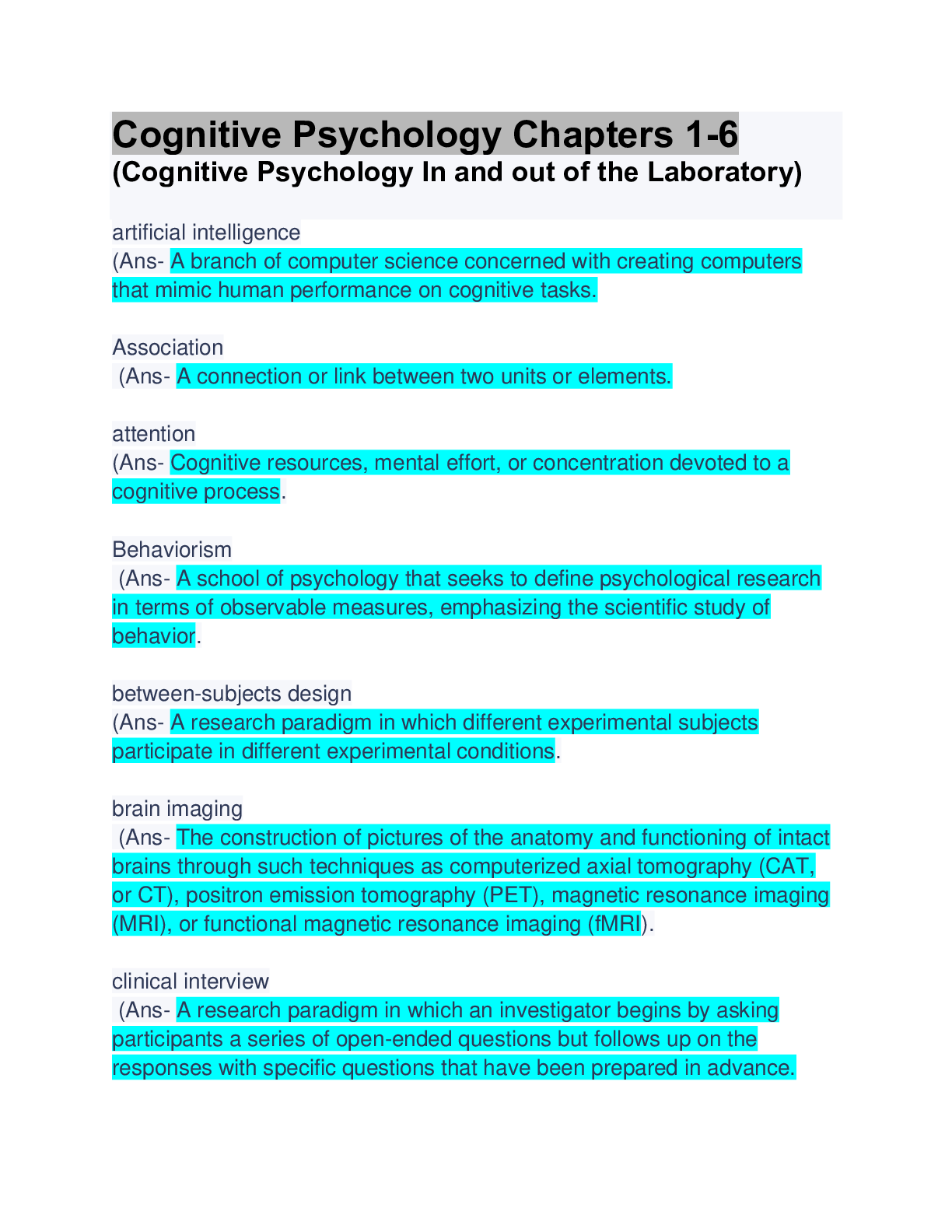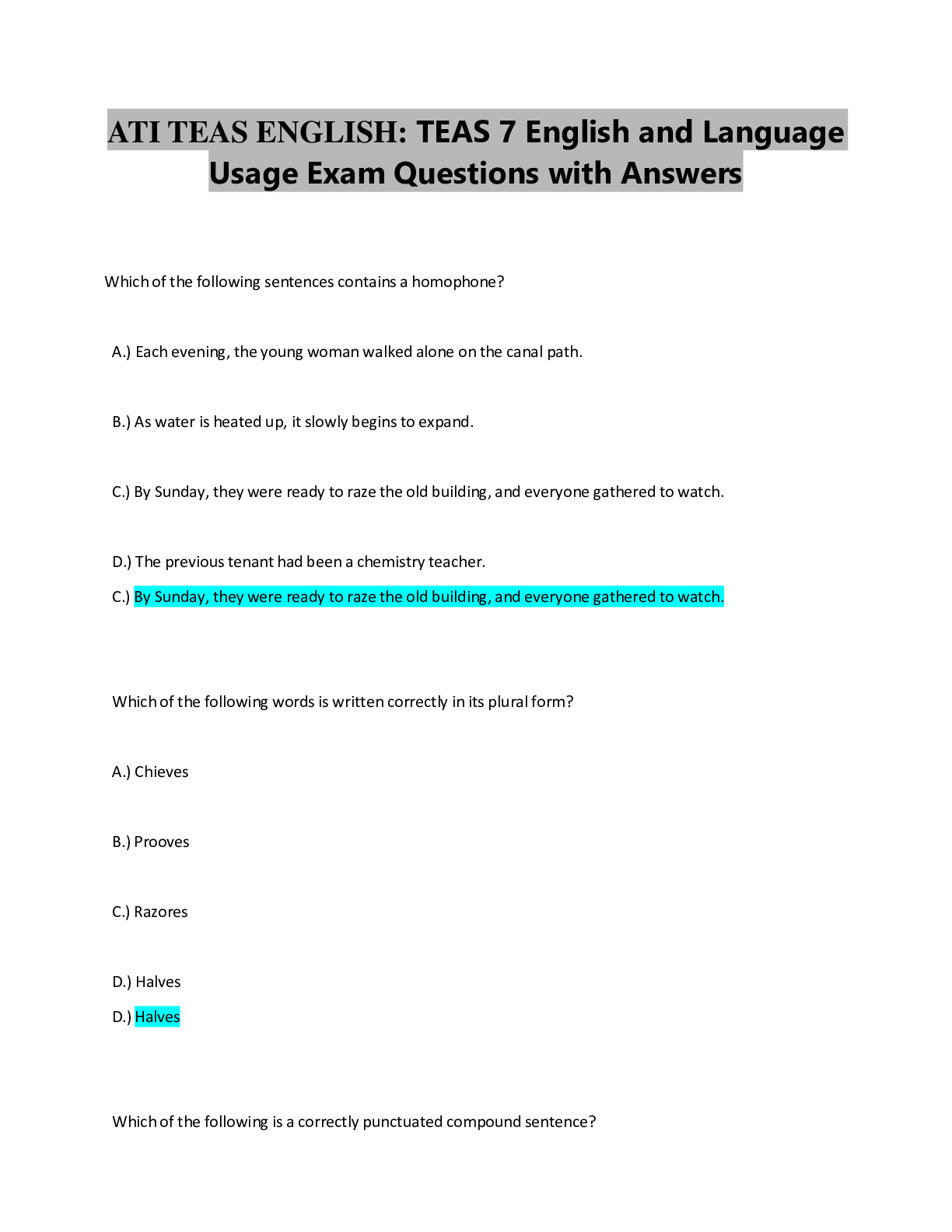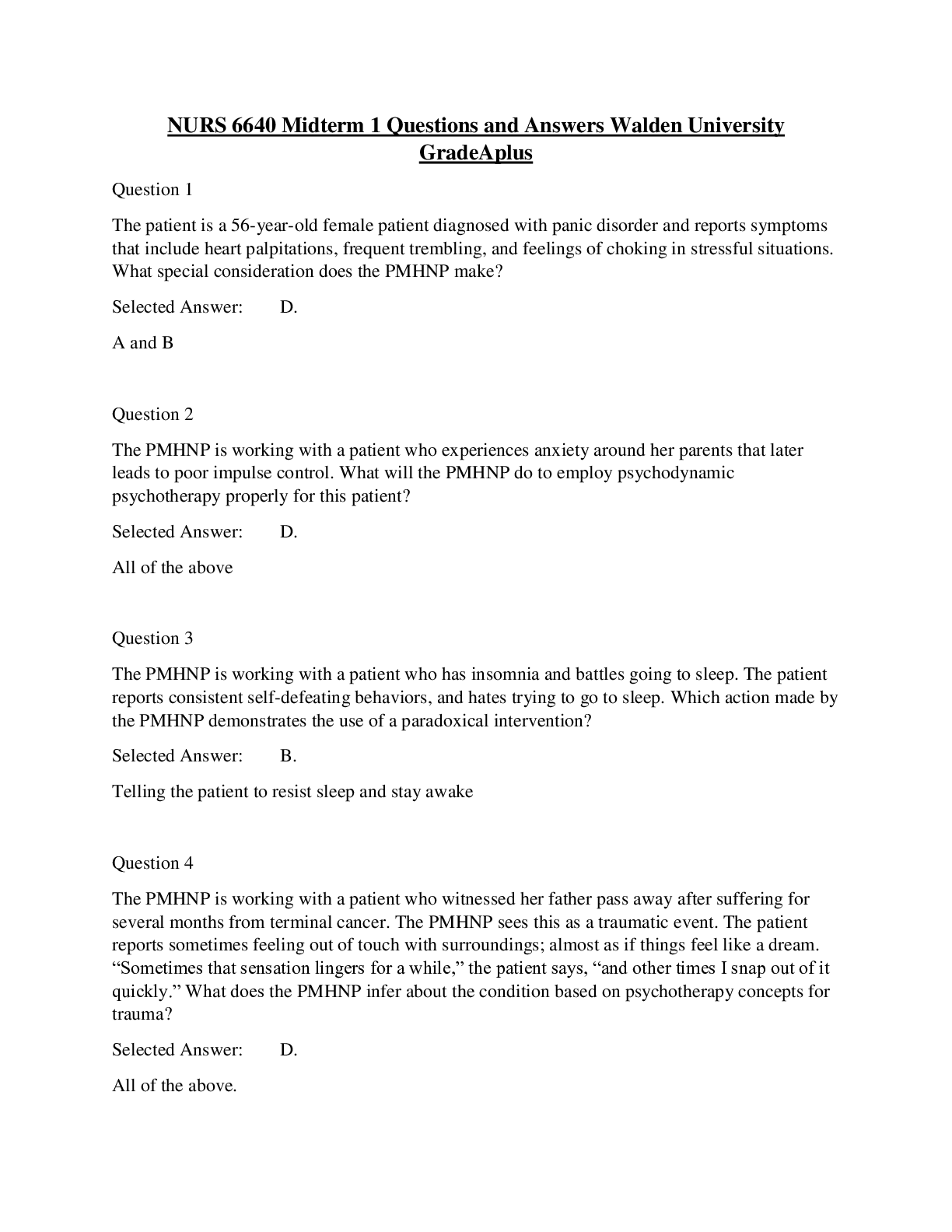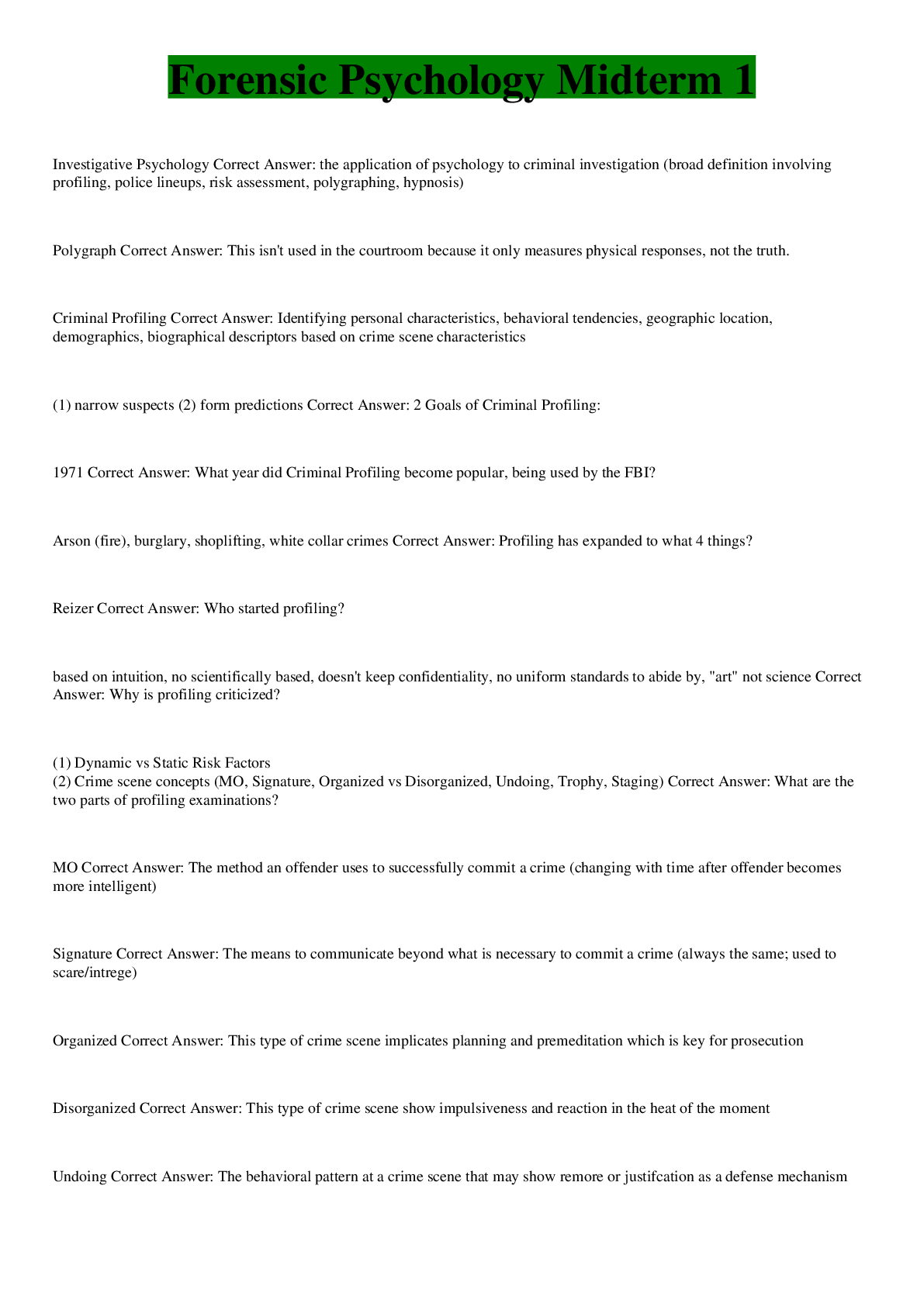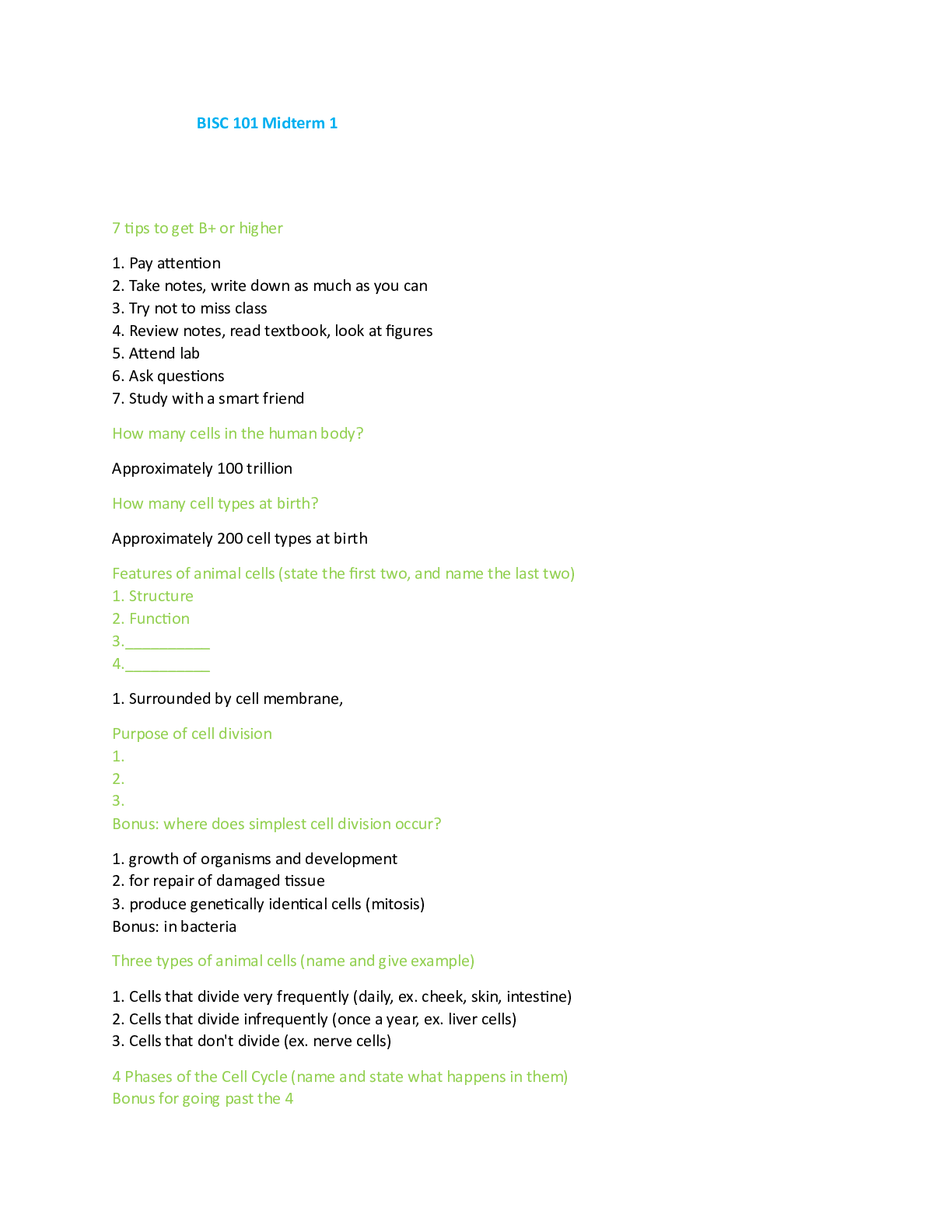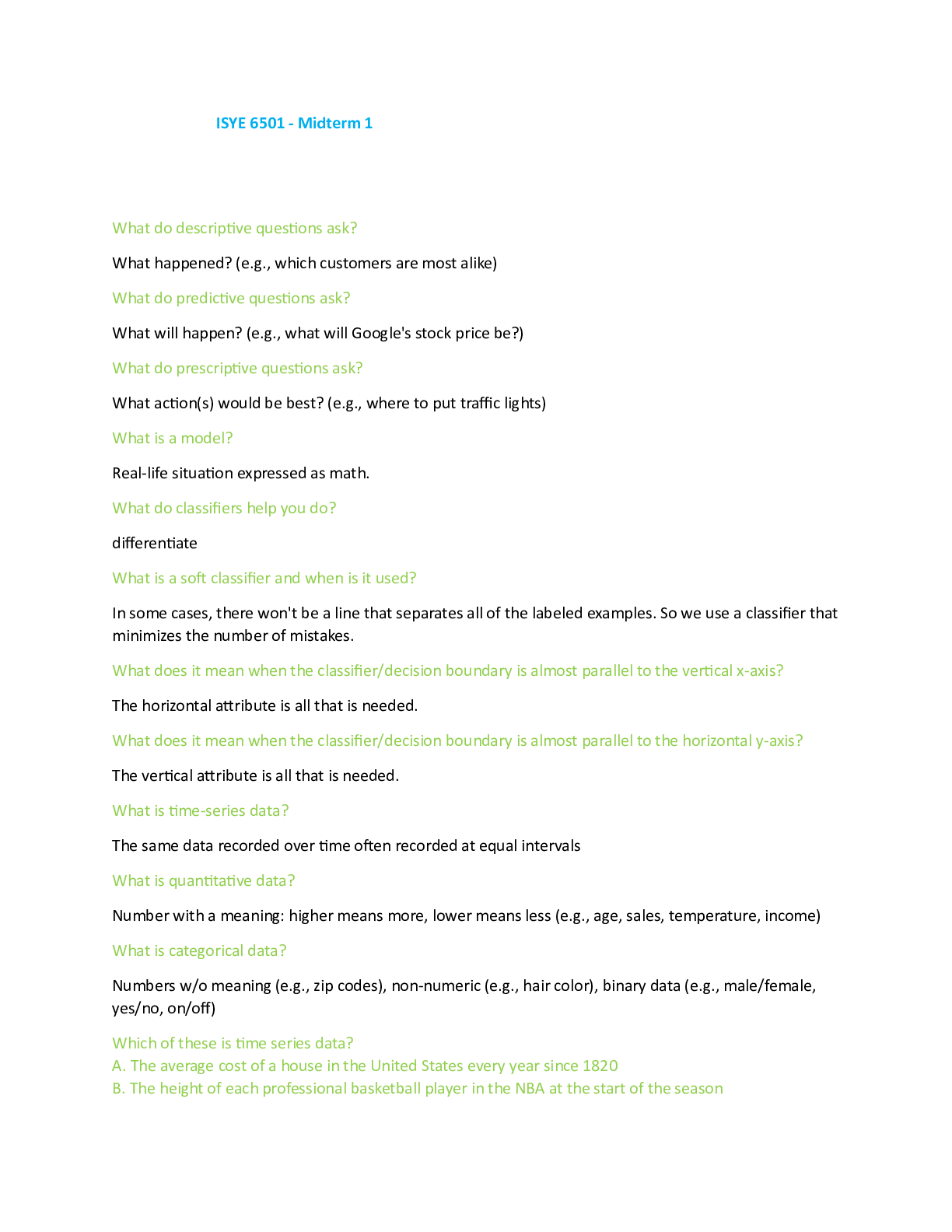BIOL 235 MIDTERM 1 Questions & Answers
Document Content and Description Below
Chapter Number: 04 Question type: Multiple Choice 1) Which of the following is NOT one of the main tissue types found in the human body? c) myocardial 2) These types of cell junctions anchor adja... cent cells together and resist their separation during contractile activities. c) adherens junctions and desmosomes 3) The thin extracellular layer, consisting of the basal and reticular lamina, that anchors epithelial cells to underlying connective tissue is called the a) basement membrane. 4) Epithelial tissue a) is used as a covering of body surfaces. b) is used as a lining of body cavities and hollow organs. c) is used to form glands. d) usually has a free surface that interacts with external environment. e) All of these answer choices are correct. Answer: e 5) Name and briefly describe the different categories of epithelial tissues based on cell shape and number of layers of cells found in the tissue. Solution: Based on cell shape, epithelial tissues can be divided into four categories including: 1) squamous which are thin and flat, 2) cuboidal which are similar in width and height, 3) columnar are taller than they are wide and 4) transitional which can change shape from cuboidal to squamous and back again. Epithelial tissues can also be categorized based on the number of layers of cells found in the tissue. These categories include: 1) simple which means a single layer of cells, 2) stratified which is two or more layers of cells and 3) pseudo stratified which is one layer of cells that appears multi-layered due to the arrangement of the nuclei in the cells. 6) Which type of epithelial tissue is found lining the heart, blood vessels and lymphatic vessels? a) Simple squamous epithelium 7) Which type of epithelial tissue forms the most superficial layer of the skin c) Stratified squamous epithelium 8) Which type of epithelial tissue lines the ducts of sweat glands and esophageal glands? d) Stratified cuboidal epithelium 9) Which type of epithelial tissue lines the fallopian tubes, uterus, and some bronchioles of the respiratory tract? b) Simple columnar epithelium 10) In which of the following locations would you most likely find transitional epithelial cells? c) Lining of the urinary bladder 11) Which of the following types of glands are categorized by whether their ducts are branched or unbranched? b) Multicellular exocrine glands 12) Which type of multicellular exocrine gland has a branched rounded secretory part attached to a single unbranched duct and is found mainly in sebaceous glands? d) Simple branched acinar gland 13) Functional classification of exocrine glands is based on c) how the gland releases its secretory product. 14) Which type of exocrine gland accumulates its secretory product in the cytosol of its cells until the cell ruptures and becomes part of the secretory product? [Show More]
Last updated: 2 years ago
Preview 1 out of 38 pages
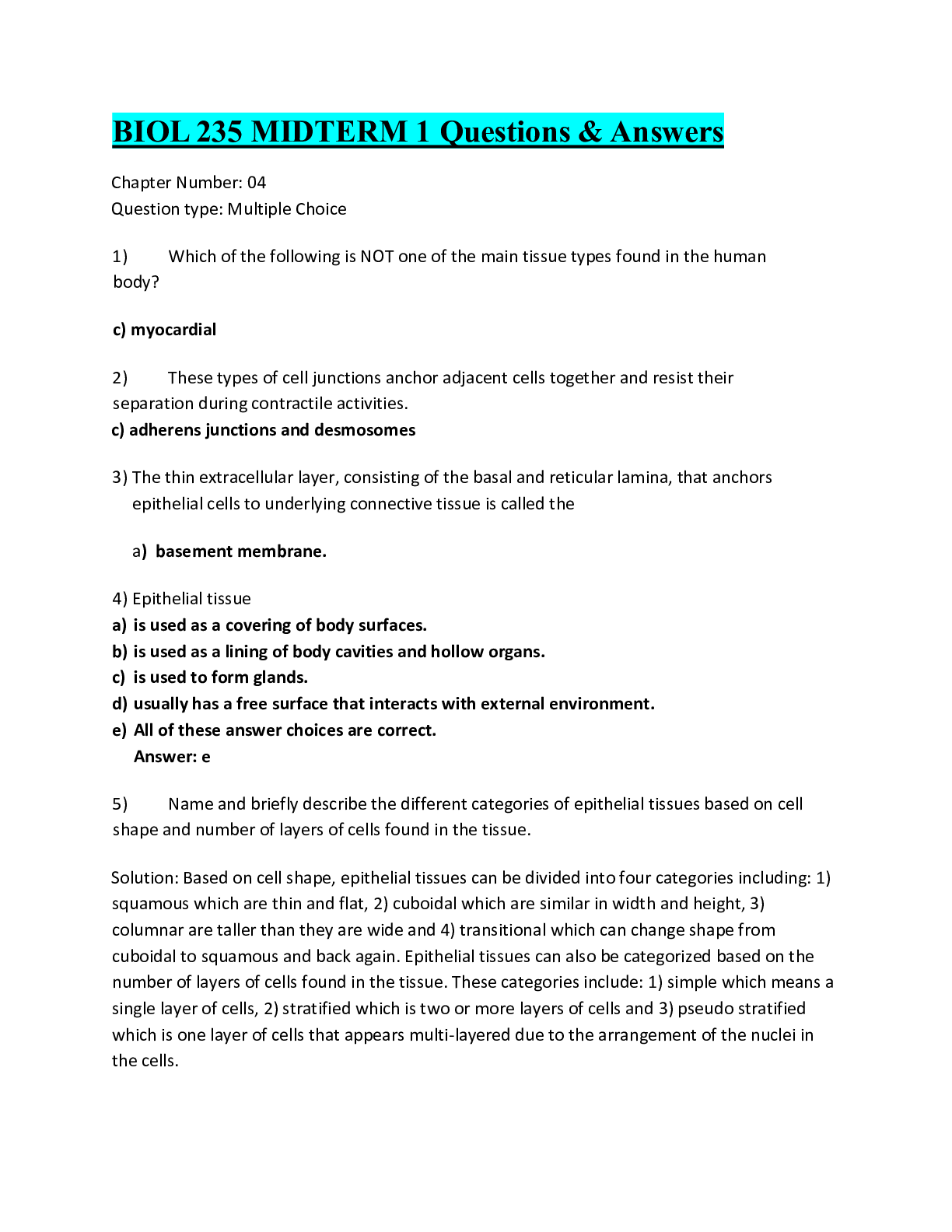
Buy this document to get the full access instantly
Instant Download Access after purchase
Buy NowInstant download
We Accept:

Reviews( 0 )
$9.00
Can't find what you want? Try our AI powered Search
Document information
Connected school, study & course
About the document
Uploaded On
Aug 18, 2022
Number of pages
38
Written in
Additional information
This document has been written for:
Uploaded
Aug 18, 2022
Downloads
0
Views
75


